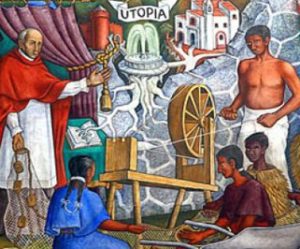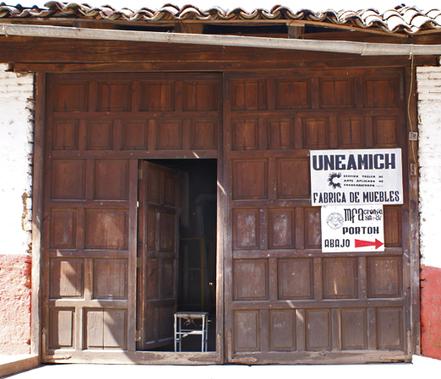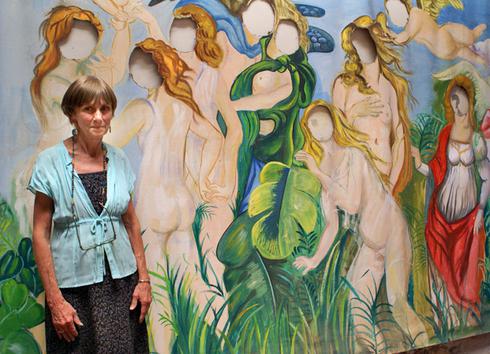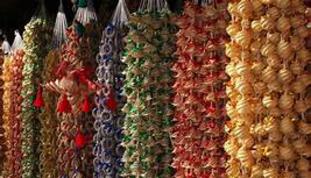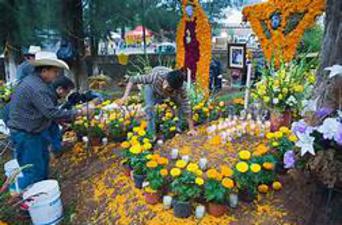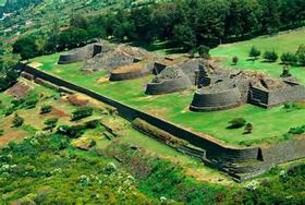Patzcuaro: The Beginning
In 1572, Bishop Quiroga rescued the Purepecha Indians from Spanish oppression, and created his vision of Utopia with craft communities around Lake Patzcuaro. He wanted the Purepecha Indians to be self-sufficient, and did so by allotting a different craft to different villages. Most of these cooperatives are still creating today.
Bishop Quiroga gave the craft of metalwork to the Indians in the hills around Santa Clara de Cobre. These were the first and only Indians allowed to work with metal. Modern Indians today were not allowed to work with metal until recently. The Spaniards did not want swords, knives or guns made and used by the Indians. The Purepecha Indians made copper bells and became very prosperous.
The Indians of Erongaricuaro were taught the craft of weaving and produced a finely woven cotton linen. They also perfected the art of “drawn fabric,” or “cut fabric” where the woof threads are removed and the longer, wrap threads of cloth are drawn together and tied into interesting designs. Intricate embroidery has been added to this fabric.
These days the major craft in Eronga is handcrafted, handprinted furniture from the Rosenthal’s MFA/ERONGA.
Ceramics were made on the shores of Lake Patzcuaro in the village of Tzintzuntzan. In today’s market, a collector of crafts will mostly find woven reed handicrafts like baskets, mobiles, figures and decorations for every holiday. These are lightweight so a big sack of these reed crafts makes a lightweight, carry-on.
Tzintzuntzán is located in the north of Michoacán state, 53 km from the capital of Morelia and 17.5 km from Pátzcuaro, located on the northeast shore of Lake Pátzcuaro. It is best known as the former capital of the Tarascan state until it was conquered by the Spanish in the 1520s. Today, Tzintzuntzan is a small town with three major attractions, the crafts market, the archeological site, and the former monastery complex of San Francisco.Outside town is an important archeological site called Ihuatzio. It is also notable for its festivals, which include the Festival of Señor del Rescate, Day of the Dead celebrations and a cultural event related to New Year's.
The craft of ceremonial masks was bestowed on the small village of Tocuaro, on the road to Erongaricuaro. Visit the workshop of Modesto and Manuel Castillo, sons of Juan Orta Castillo (1940 – 2006), who won the prestigious National Mask Maker award several times. Equally famous is mask maker Felipe Horta, who lives on the first road into town from Patzcuaro. There are not only no signs on the home/studios of the many mask makers, there are also no street signs. Tocuaro is a small village where everyone is friendly and will gladly point you to the correct doors.
Uruapan’s craftspeople are famous for their cedar lacquerware, especially the boxes and trays. Inside the city limits is the National Park, an aquatic park full of beautiful fountains spraying water into air. One distinctive element of Michoacán traditional lacquerware is the use of “aje,” the larvae of an insect, from which a waxy substance is extracted. This is mixed with linseed oil to create the lacquer.
Arrive to Uruapan hungry and feast on their Fresh Trout Michoacan, lightly sautéed, covered with chopped macadamia nuts which have been sautéed in butter and slices of avocado. Uruapan is known as the avocado capital of the world. Then enjoy a stroll along the lush waters of the National Park. The Purépecha Indians called it “the river that sings.”
Besides pork carnitas, the town of Quiroga is known for their woodcarvings. The village of Cuanajo creates hand-carved pine furniture. The Indians of Ihuatzio weave tule, the reed that grows on the side of the Lake Patzcuaro. Fine china is made in Patamban and exquisite guitars are crafted in Paracho. There is a hat factory in the very small village of Jarácuaro. All these villages are easily assessed from Patzcuaro.
Lake Patzcuaro is one of the major craft centers in the Americas and the village of Patzcuaro is the hub of this utopia. This cultural center is also a commercial epicenter. Bishop Quiroga envisioned all these crafts being brought together in the lakeside paradise of Patzcuaro, a Mecca for today’s craft’s collector.
Serious collectors will begin at the The Museo de Artes e Industrias Populares (Museum of Popular Arts and Industries) just south of the Basilica, housed in the first college in the Americas. This Museum is a great source of information and examples of the crafts that Bishop Quiroga envisioned. Built in the mid-1500’s, the ancient seminar now displays an excellent collection of lacquerware, copper ware, ceramics and masks. Don’t miss the exhibition of the religious artifacts made from pasta de cana, a ceramic-like paste made from corn.
Wander towards the back of the museum, into the beautiful patio, and notice the typical Purepecha house. The rows of rock foundations and the slanting row of rocks are part a pre-Hispanic pyramid. The Spaniards built their churches (and seminars) on and from the ruins of ancient Purepecha temples.
When you leave the Museum, turn RIGHT and walk one block north to the Basilica. As you walk in to the beautiful church, glance to the left to view Bishop Quiroga’s tomb. High above the alter, at the back of the church, is the most will known religious artifact of pasta de cana, the revered Our Lady of Health. She is a very powerful saint and has performed many miracles.
Now that you have seen the very best examples of Michoacan crafts, it’s time to start collecting.
Crafts market is open everyday, but weeks are the best.
Very unusual round pyramids located near the crafts market.
On the outskirts of town, notice these large, outdoor stone sculptures for sale.
Visit the church with the growing Jesus and decorated cemetery, preferable at night before Day of the Dead.
